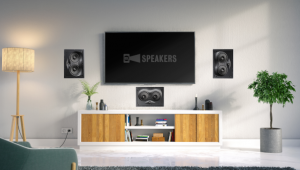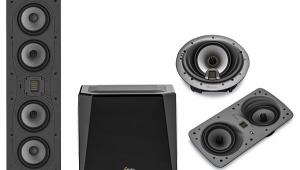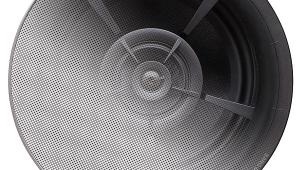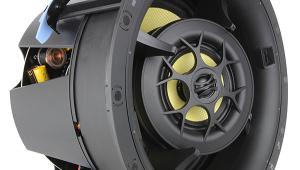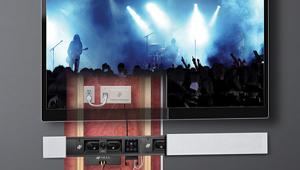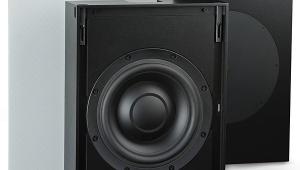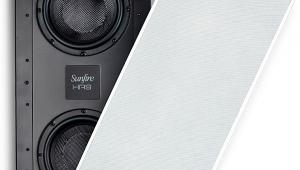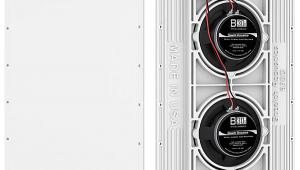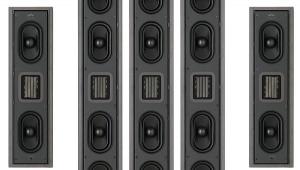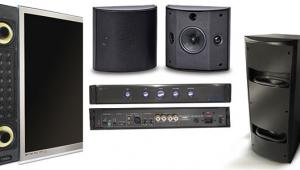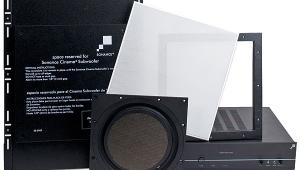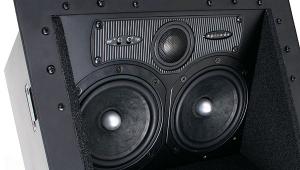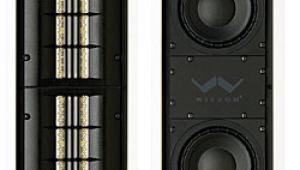Morel SoundWall LCR4 SW In-Wall Modular Soundbar System Review Page 2
The Clampion of Mounting Systems
I’ve seen a number of invisible—let me rephrase that—I’ve heard a number of invisible architectural speakers over the years, as well as semi-invisible speakers and disguised ones, and they all have their place (usually in the wall, but sometimes in the ceiling…). Seriously, these types of speakers aren’t for everyone because there’s usually a noticeable tradeoff
in sound quality to get stealth. But in applications for people who absolutely hate looking at their walls and seeing speaker grilles (or, worse, exposed speakers and brackets), hidden or semi-hidden speakers can be like a giant bottle of acoustic antacid for interior decorators. In rare instances, some of these speakers sound pretty awe-
some, too, so they shouldn’t
be dismissed as mere décor accessories.
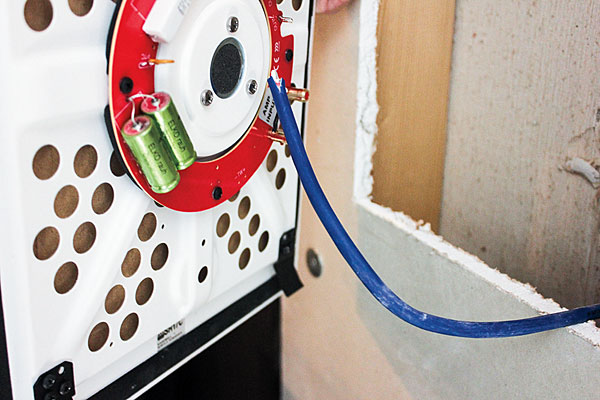
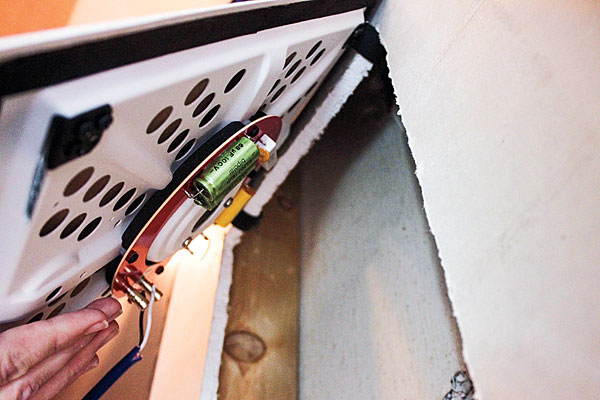
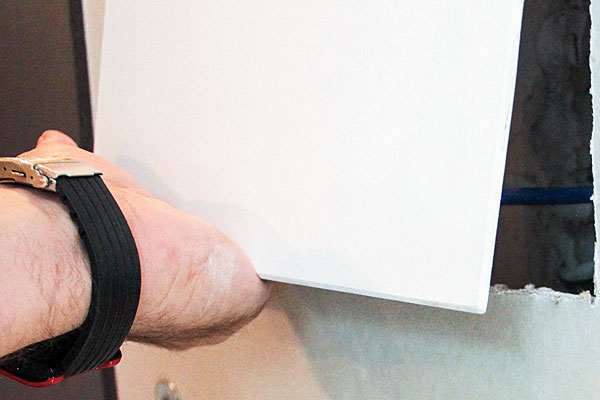
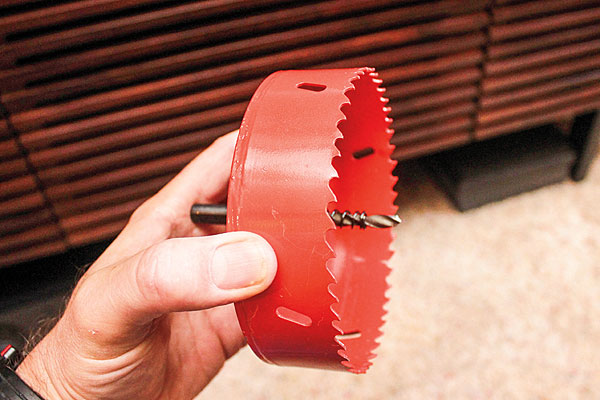
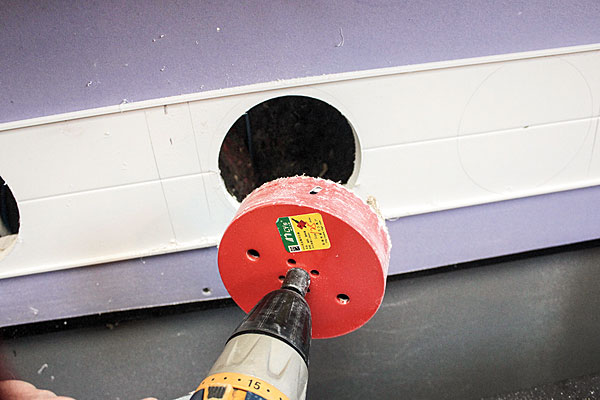
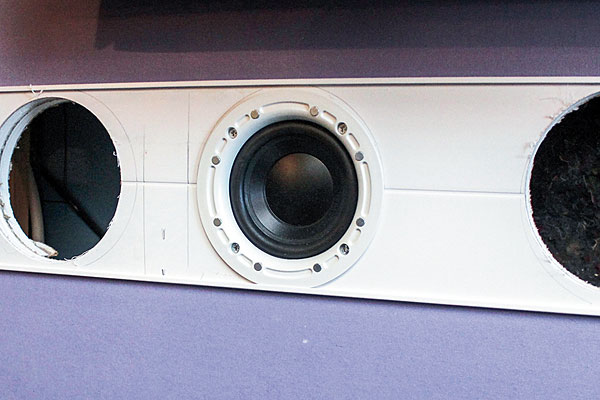
For this review, Morel sent a pair of SoundWall Surface SH17C speakers to use for the surround channels, which the company describes as “semi-hidden.” (They also make the H17C “hidden” model, which is a fully invisible version.) After holding one of the SH17Cs in my hands earlier this year, I was intrigued by the thinness of the speaker; its 1.5-inch mounting depth is well under the 3-plus inches required by most in- wall models, and it offers the possibility of using the SH17C in a wide variety of installations. The driver—there’s only one—has a flat composite membrane diaphragm that’s 1.2mm (0.047 inch) thick, driven by an under-hung 2.25-inch aluminum Hexatech voice coil-equipped motor. Morel says the SH17C will reproduce 100 hertz to 20 kilohertz (±3 decibels). The speaker is 13.7 inches high x 10.2 wide. What really caught my eye, though, was the clever simplicity of the mounting clips—and, consequently, the design’s promise of a painless, tool-free installation. Seeing a pair of speakers versus actually installing them, however, can often result in totally different opinions. (Of course, there’s also the sound quality part, but let’s not get ahead of ourselves.)
Most of the invisible or semi-invisible speakers I’ve worked with have been a friggin’ pain in the ass to install. But the SH17C is so simple and easy to work with that, if I were an installer, I’d be ashamed to charge for the job. (Before I get snarky e-mails from professionals: That part about not charging for labor was heavy on the hyperbole. There’s still plenty of work involved, like cutting the drywall and running the wires, so it’s well worth paying a pro to install the SH17C speakers.) Instead of the typical screw-tightened dog ears or ratcheting clamps, the SH17C’s proprietary Easy Grip mounting system uses two pair of metal clamps—and gravity. (Morel doesn’t charge for the gravity, by the way.) After cutting the hole in the drywall and connecting the speaker wire, all I had to do was tilt the speaker forward and slide the two long clamps attached to the top edge of the speaker behind the wallboard. After pushing the speaker up and all the way in, I gently let the assembly slide down until the clamps on the bottom edge slipped snugly over the bottom of the wall opening. The hardest part was…there was no hard part. That was the extent of the installation! About the only thing simpler would be a peel-and-stick vinyl speaker.
In essence, Morel’s Easy Grip mounting system is the clip-on bow tie of in-wall speakers. Built-in tension in the spring metal clamps allows the design to work with nearly any thickness of wallboard, although Morel says that for walls thicker than 15mm (0.6 inches), the clamps may have to be bent manually to a more open angle so that they’ll slide over—rather than into—the wallboard.
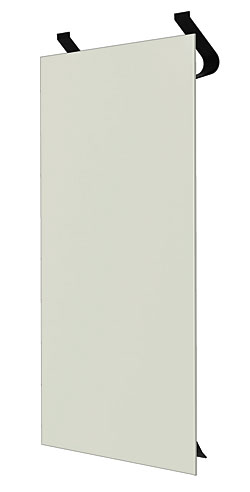 The result is an off-white, 3mm-thick rectangle with slightly beveled edges mounted securely on the wall. If off-white isn’t your color of choice, the SH17C’s surface material can be painted or have wallpaper
or wood veneer glued to it. I coated the SH17C review samples with an acrylic-based paint. I really liked the way they blended into the wall. They weren’t totally invisible, but they didn’t attract attention—and they sure as hell didn’t look like a set of speakers in the wall. From both an installation and a décor standpoint, the SH17Cs are a home run. But has Morel turned that home run into a grand slam by making them sound good, too?
The result is an off-white, 3mm-thick rectangle with slightly beveled edges mounted securely on the wall. If off-white isn’t your color of choice, the SH17C’s surface material can be painted or have wallpaper
or wood veneer glued to it. I coated the SH17C review samples with an acrylic-based paint. I really liked the way they blended into the wall. They weren’t totally invisible, but they didn’t attract attention—and they sure as hell didn’t look like a set of speakers in the wall. From both an installation and a décor standpoint, the SH17Cs are a home run. But has Morel turned that home run into a grand slam by making them sound good, too?
Unbroken Walls of Sound
After having come down from the highs induced by reviewing several Dolby Atmos systems (the most recent also being a soundbar, Yamaha’s YSP-5600), I was worried that not having height channels (front, rear, or both) would affect my ultra-professional, totally objective skills of evaluation. I really enjoy Atmos, and there was never any doubt that my Morel setup wasn’t an Atmos system. On the other hand, the SoundWalls kicked some ass, took names, and then kicked some more ass just to make sure the names were spelled correctly.
Wonderful articulation and spectacular dynamics were among the first things I noticed with the SoundWall LCR4 SW arrangement. I particularly marveled at how exceptionally well it handled the multilayered sound in the fast-paced scene at the opera house in Mission: Impossible—Rogue Nation. As the camera cuts from character to character and from location to location, different elements in the sound shift in prominence to match. First, there’s the full-on singing of the actors with the orchestra until, suddenly, Benji (Simon Pegg) is talking into his microphone, with the performance in the background—followed by the fight scene in the set riggings. Regardless of the hierarchy of the sonic elements, the overall sound was intelligible, coherent, dramatic, and engrossing. Turning to Unbroken, I was quite impressed with the truly unbroken, sweeping soundstage across the front, as well as with the way the IC-4M I and IC-4M W handled the rapid, intense bursts of gunshots and flak explosions without breaking up (unlike much of the movie’s aircraft). And before 13 Hours totally sucked me in, making me forget to take any more notes, I couldn’t help but notice the clarity, intelligibility, and heft of the dialogue—partly the result, I’m sure, of the double IC-4M W woofers supporting the center channel’s IC-4M I.
To say that the LCR4 SW was seamless across the front is an understatement, but what made the system absolutely spectacular was the addition of the SH17Cs as surrounds. It made for one of the richest, most enveloping 5.1-channel systems I’ve heard in a long, long time. In 13 Hours, when there’s a call to prayer from the towers in Benghazi, the wavering singing became a palpable presence, as if it were a delicate mist that had seeped into my room. In Unbroken’s flak explosions, the SH17Cs easily kept up with the articulation of the LCR4 SW. When a bomber flew over from the front to the back of the room, I was surprised that my hair wasn’t blown back by the action on the screen.
Morel has long been known for making tweeters with a sound that’s highly detailed but not too forward or harsh. That’s certainly true of the soft dome tweeter in the IC-4M I module, too, and it was joined by notably clear and open sound from the coincidentally aligned midrange—all of which makes listening to two-channel music a delightful experience. The slow, soft, melancholy longing in Jessica Molaskey’s voice on her rendition of “O-o-h Child” was perfectly defined, showing off the subtle details in the vocals without being overly intense. That intense-less detail, if I can call it that, was the LCR4 SW’s defining characteristic on tracks that were notable for their instrumentation, such as Jack White’s “Blunderbuss” and Gillian Welch’s “Look at Miss Ohio.” The only real flaw in the system’s musicality was a slight emphasis in the midbass that made Dar Williams sound a little thicker than usual on “The End of the Summer.” (In the LCR4 SW’s defense, speaker placement can have an effect in this part of the vocal range, though my installation about an inch and a half below my wall-mounted TV is hardly atypical.)
Conclusion
Once again, the standard caveat applies for architectural speakers: If pure performance is your sole criterion, then in-wall and in-ceiling speakers aren’t going to be among the first choices on your list of loudspeaker candidates. Once ergonomic and décor concerns are thrown into the mix, however, it’s a different tune. With the SoundWall LCR4 SW and the SoundWall Surface SH17C, Morel has created a series of speakers that can be used in a variety of configurations and locations. What’s more, they’re unobtrusive and embarrassingly easy to install, and they sound great, especially the SH17C, which really stole the show and has become—for now—my new favorite in-wall speaker.
